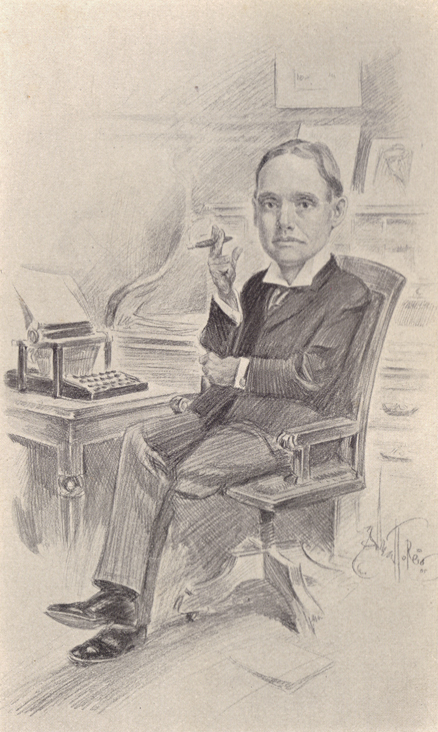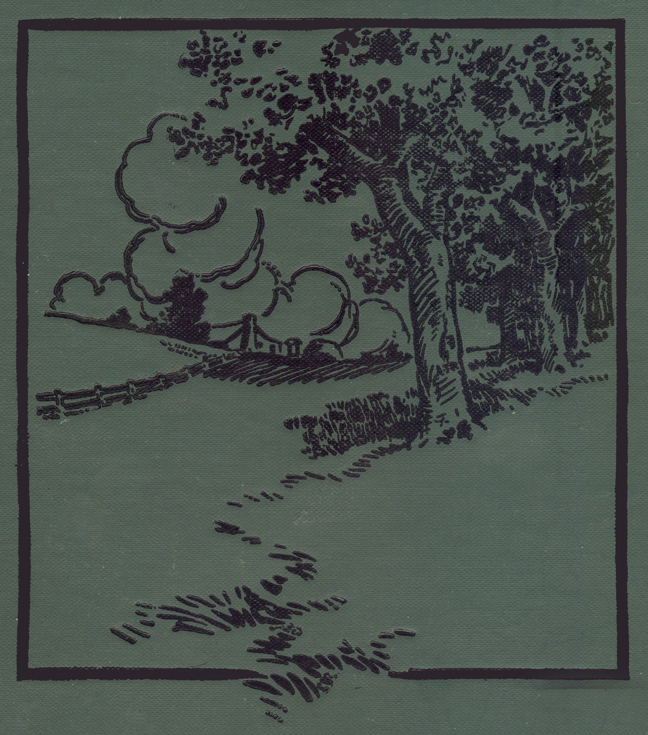
From At the Grass Roots, Comprising “The Christmas of 1883,” and Other Vagrant Sketches, by Elmer House (Dodd Gaston), with Cover Design and Frontispiece by Albert T. Reid, Topeka: Monotyped by Crane & Company, 1905; pp. 56-61.

The biggest piece of news that ever happened in our neighborhood was when Ol Swank and Vern Harbaugh ran away with a circus. Neither was over sixteen years old at the time. They had gone down to Osage Mission to see the circus with a lot of other boys, and the spirit of unrest which surges in the breast of every boy having swept them off their feet, they were lured into the lair of the boss of the roustabouts. There was an impression current among the boys of the neighborhood that Ol and Vern were wearing spangled tights and riding a fat white horse around an improvised ring, kissing their hands the while in response to the plaudits of an assembled multitude. But that fiction was later on exploded. For it developed that Vern looked after the monkey cage and drove a wagon in the parade, while Ol was employed in the cook tent.
57 The affair was the talk of the neighborhood for weeks. Ol left a widowed stepmother and a large family of smaller brothers and sisters whose principal support he had been, and there was much indignation because of his summary desertion of them. He had not gotten along well with his stepmother, but she was an admirable and worthy woman, and the sympathy of the neighborhood was with her. It was freely predicted that the boys would come sneaking back within a week, but as a matter of fact, Ol never came back. Once or twice he was heard from in remote sections of the country, but he never set foot in the neighborhood again, and in the course of a few years all trace of him was lost.
The boys ran away in August. Vern made land at his father’s hearthside early in the following January. Curiously enough, he seemed to have lost all of his desire to be a circus performer, but he consented to teach the boys in the neighborhood 58 the business, and nearly all of the idle time during the following year was devoted to it. Vern’s circus school turned out a number of finished performers. It came to be one of the commonest of sights to see a sedate plowhorse loping across the prairie, a boy poised on one foot on his broad back. A number of polished “flip-flop” turners were also graduated. Al Grable could do a double “flip-flop” faultless from a short springboard, and Frank Harbaugh reached that point of perfection at which he could negotiate a back “flip-flop” standing squarely on the level ground, with the greatest of ease. In fact, I have since seen circus performers fail in turns which the boys of our neighborhood did handily without the aid of circus accessories.
Interest in the circus business was finally submerged in the excitement over the return of Henry Fought from Colorado, and the performers went out of business. Henry was the oldest of the 59 Fought boys, and had been in Colorado a number of years. Those of us who came into the neighborhood after his departure had heard a great deal about him. The fact that he was steadily employed at $3 a day and was saving his money gave him considerable distinction, and as he had been a great favorite in the neighborhood, local interest in him held up well.
Henry came back one fall wearing the best clothes I had ever seen up to that time. He visited the school within a day or two after his arrival, and if any doubt had been entertained as to his status in the neighborhood it was at once set to rest. For the teacher not only greeted him cordially, but permitted him to sit with two or three of the big girls during the afternoon and help them with their examples. This latter was a special mark of distinction, and was conferred only upon honored guests at the school. I confess, that at first sight, Henry was a 60 little disappointing to me. For he wore chin whiskers, and I am so prejudiced against the chin whisker that even now, when the breadth and knowledge of maturer years have swept away many of my old prejudices, I am never able to associate it in my mind with greatness or distinction.
The stories of Henry’s prosperity were borne out immediately upon his return by his purchase of a top buggy and a breech-loading shotgun. Up to that time there had been but one top buggy in the community and no breech-loading shotgun. The other Fought boys, Ed, Grant, and Bill, were permitted to hunt with the gun, and it not only gave them a great advantage over the other boys when the ducks and geese were flying, but caused a lot of enmity and jealousy as well. Most of us had nothing better than single-barrel guns, and here were more condemned army muskets than any other kind of shooting-iron. And so when the 61 Fought boys began to bag three and four mallards at a shot and talk contemptuously of muzzle-loading guns there was much indignation and hard feeling toward them.
I had nothing but an old cap-and-ball rifle, and never killed anything anyway, but I took sides with the other boys against the Foughts, who were thought to be “stuck up” over Henry’s gun. We were constantly inventing stories about the prodigious amount of game we killed with our antiquated weapons and running down the breech-loader, although it was really a very good gun. Half a dozen fights resulted, and in the excitement of trying the beat the Fought boys the circus business was forgotten.
